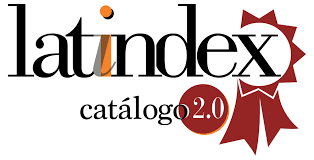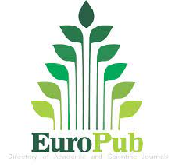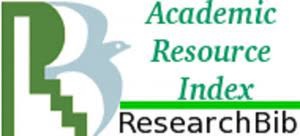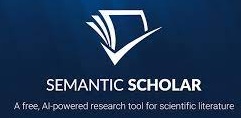Sección:
Artículos
Publicado:
2022-02-08
RELACIÓN ENTRE EL GEN ACTN3 Y EL RENDIMIENTO MUSCULAR EN DEPORTISTAS. REVISIÓN NARRATIVA DE LA LITERATURA
Palabras clave:
(es)
ACTN3, Sports, Muscle Strength, Power, Endurance, Injury
En el presente artículo se describe mediante un estudio de tipo descripción de la literatura la relación existente entre el gen ACTN3 y sus polimorfismos en el rendimiento muscular de deportistas de alto rendimiento de diferentes disciplinas. Se han tenido en cuenta bases de datos como Science Direct, Pubmed, Proquest, Clinical Key, Medline y Springerlink y la búsqueda se ha hecho mediante los términos MeSH ACTN3, Sports, Muscle Strength, Power, Endurance y Injury. Se incluye en este artículo una tabla con la descripción de cada uno de los artículos escogidos con su calificación a través de Scimago.
Referencias
1. Kim, J., & Jung, E. (2014). Genetic associations of body composition, flexibility and injury risk with ACE, ACTN3 and COL5A1 polymorphisms in Korean ballerinas. Journal Of Exercise Nutrition And Biochemistry, 18(2), 205-214. http://dx.doi.org/10.5717/jenb.2014.18.2.205
2. Papadimitriou I, Lucia A. ACTN3 R577X and ACE I/D gene variants influence performance in elite sprinters: a multi-cohort study. BMC Genomics. 2016;17(1).
3. Orysiak, J., & Sitkowski, D. (2015). Overrepresentation of the ACTN3 XX Genotype in Elite Canoe and Kayak Paddlers. Journal Of Strength And Conditioning Research, 29(4), 1107-1112. http://dx.doi.org/10.1519/jsc.0000000000000717
4. Yang, R., & Shen, X. (2017). ACTN3 R577X Gene Variant Is Associated With Muscle-Related Phenotypes in Elite Chinese Sprint/Power Athletes. Journal Of Strength And Conditioning Research, 31(4), 1107-1115. http://dx.doi.org/10.1519/jsc.0000000000001558
5. Li, Y., & Wang, L. (2017). ACTN3 R577X genotype and performance of elite middle-long distance swimmers in China. Biology Of Sport, 1, 39-43. http://dx.doi.org/10.5114/biolsport.2017.63731
6. Santiago, C., & Gonzalez-Freire, M. (2007). ACTN3 genotype in professional soccer players. British Journal Of Sports Medicine, 42(1), 71-73. http://dx.doi.org/10.1136/bjsm.2007.039172
7. Orysiak, J., & Busko, K. (2014). Relationship between ACTN3 R577X polymorphism and maximal power output in elite Polish athletes. Medicina, 50(5), 303-308. http://dx.doi.org/10.1016/j.medici.2014.10.002
8. Ruiz, J., & Fernández del Valle, M. (2010). ACTN3 R577X polymorphism does not influence explosive leg muscle power in elite volleyball players. Scandinavian Journal Of Medicine & Science In Sports, 21(6), e34-e41. http://dx.doi.org/10.1111/j.1600-0838.2010.01134.x
9. Lucia, A., & Gómez-Gallego, F. (2006). ACTN3 Genotype in Professional Endurance Cyclists. International Journal Of Sports Medicine, 27(11), 880-884. http://dx.doi.org/10.1055/s-2006-923862
10. Rodríguez-Romo G, Yvert T, de Diego A. (2013). No Association Between ACTN3 R577X Polymorphism and Elite Judo Athletic Status. International Journal of Sports Physiology and Performance. 8, 579-581.
11. Holdys, J., Kryściak, J., Stanisławski, D., & Gronek, P. (2011). Polymorphism of the α-ACTN3 gene in individuals practising different sports disciplines. Biology of Sport, 28(2), 101–106.
12. Scott, R. A., Irving, R., Irwin, L., Morrison, E., Charlton, V., Austin, K., Pitsiladis, Y. P. (2010). ACTN3 and ACE genotypes in elite Jamaican and US sprinters. Medicine and Science in Sports and Exercise, 42(1), 107–112.
13. Egan, B., & Zierath, J. R. (2013). Exercise metabolism and the molecular regulation of skeletal muscle adaptation. Cell Metabolism, 17(2), 162–184.
14. Saavedra, C. (2006). Actividad física, salud y rendimiento físico: bases moleculares. Universidad Laval.
15. Pokrywka, A., Kaliszewski, P., Majorczyk, E., & Zembron- Lacny, Z. (2013). Genes in sport and doping. Biology of Sport, 30(3), 155–161.
16. Bray, M. S., Hagberg, J. M., Pérusse, L., Rankinen, T., Roth, S. M., Wolfarth, B., & Bouchard, C. (2009). The human gene map for performance and health-related fitness phenotypes: The 2006-2007 update. Medicine and Science in Sports and Exercise, 41(1), 34–72.
17. ACTN3 actinin alpha 3 (gene/pseudogene) [Homo sapiens (human)] - Gene - NCBI [Internet]. Ncbi.nlm.nih.gov. 2018 [cited 23 March 2018]. Available from: https://www.ncbi.nlm.nih.gov/gene?cmd=Retrieve&dopt=full_report&list_uids=89
18. Sports - MeSH - NCBI [Internet]. Ncbi.nlm.nih.gov. 2018 [cited 23 March 2018]. Available from: https://www.ncbi.nlm.nih.gov/mesh/68013177
19. Muscle Strength - MeSH - NCBI [Internet]. Ncbi.nlm.nih.gov. 2018 [cited 23 March 2018]. Available from: https://www.ncbi.nlm.nih.gov/mesh/68053580
20. Sapega A, Drillings G. The Definition and Assessment of Muscular Power. Journal of Orthopaedic & Sports Physical Therapy. 1983;5(1):7-9
21. Correa Bautista J, Corredor López D. Principios y métodos para el entrenamiento de la fuerza muscular. Bogotá (Colombia): Editorial Universidad del Rosario; 2009
2. Papadimitriou I, Lucia A. ACTN3 R577X and ACE I/D gene variants influence performance in elite sprinters: a multi-cohort study. BMC Genomics. 2016;17(1).
3. Orysiak, J., & Sitkowski, D. (2015). Overrepresentation of the ACTN3 XX Genotype in Elite Canoe and Kayak Paddlers. Journal Of Strength And Conditioning Research, 29(4), 1107-1112. http://dx.doi.org/10.1519/jsc.0000000000000717
4. Yang, R., & Shen, X. (2017). ACTN3 R577X Gene Variant Is Associated With Muscle-Related Phenotypes in Elite Chinese Sprint/Power Athletes. Journal Of Strength And Conditioning Research, 31(4), 1107-1115. http://dx.doi.org/10.1519/jsc.0000000000001558
5. Li, Y., & Wang, L. (2017). ACTN3 R577X genotype and performance of elite middle-long distance swimmers in China. Biology Of Sport, 1, 39-43. http://dx.doi.org/10.5114/biolsport.2017.63731
6. Santiago, C., & Gonzalez-Freire, M. (2007). ACTN3 genotype in professional soccer players. British Journal Of Sports Medicine, 42(1), 71-73. http://dx.doi.org/10.1136/bjsm.2007.039172
7. Orysiak, J., & Busko, K. (2014). Relationship between ACTN3 R577X polymorphism and maximal power output in elite Polish athletes. Medicina, 50(5), 303-308. http://dx.doi.org/10.1016/j.medici.2014.10.002
8. Ruiz, J., & Fernández del Valle, M. (2010). ACTN3 R577X polymorphism does not influence explosive leg muscle power in elite volleyball players. Scandinavian Journal Of Medicine & Science In Sports, 21(6), e34-e41. http://dx.doi.org/10.1111/j.1600-0838.2010.01134.x
9. Lucia, A., & Gómez-Gallego, F. (2006). ACTN3 Genotype in Professional Endurance Cyclists. International Journal Of Sports Medicine, 27(11), 880-884. http://dx.doi.org/10.1055/s-2006-923862
10. Rodríguez-Romo G, Yvert T, de Diego A. (2013). No Association Between ACTN3 R577X Polymorphism and Elite Judo Athletic Status. International Journal of Sports Physiology and Performance. 8, 579-581.
11. Holdys, J., Kryściak, J., Stanisławski, D., & Gronek, P. (2011). Polymorphism of the α-ACTN3 gene in individuals practising different sports disciplines. Biology of Sport, 28(2), 101–106.
12. Scott, R. A., Irving, R., Irwin, L., Morrison, E., Charlton, V., Austin, K., Pitsiladis, Y. P. (2010). ACTN3 and ACE genotypes in elite Jamaican and US sprinters. Medicine and Science in Sports and Exercise, 42(1), 107–112.
13. Egan, B., & Zierath, J. R. (2013). Exercise metabolism and the molecular regulation of skeletal muscle adaptation. Cell Metabolism, 17(2), 162–184.
14. Saavedra, C. (2006). Actividad física, salud y rendimiento físico: bases moleculares. Universidad Laval.
15. Pokrywka, A., Kaliszewski, P., Majorczyk, E., & Zembron- Lacny, Z. (2013). Genes in sport and doping. Biology of Sport, 30(3), 155–161.
16. Bray, M. S., Hagberg, J. M., Pérusse, L., Rankinen, T., Roth, S. M., Wolfarth, B., & Bouchard, C. (2009). The human gene map for performance and health-related fitness phenotypes: The 2006-2007 update. Medicine and Science in Sports and Exercise, 41(1), 34–72.
17. ACTN3 actinin alpha 3 (gene/pseudogene) [Homo sapiens (human)] - Gene - NCBI [Internet]. Ncbi.nlm.nih.gov. 2018 [cited 23 March 2018]. Available from: https://www.ncbi.nlm.nih.gov/gene?cmd=Retrieve&dopt=full_report&list_uids=89
18. Sports - MeSH - NCBI [Internet]. Ncbi.nlm.nih.gov. 2018 [cited 23 March 2018]. Available from: https://www.ncbi.nlm.nih.gov/mesh/68013177
19. Muscle Strength - MeSH - NCBI [Internet]. Ncbi.nlm.nih.gov. 2018 [cited 23 March 2018]. Available from: https://www.ncbi.nlm.nih.gov/mesh/68053580
20. Sapega A, Drillings G. The Definition and Assessment of Muscular Power. Journal of Orthopaedic & Sports Physical Therapy. 1983;5(1):7-9
21. Correa Bautista J, Corredor López D. Principios y métodos para el entrenamiento de la fuerza muscular. Bogotá (Colombia): Editorial Universidad del Rosario; 2009
Cómo citar
RINCON BOLIVAR, N. J., ENTRENA YAÑEZ, C. M., & GARCIA FLOREZ, J. J. (2022). RELACIÓN ENTRE EL GEN ACTN3 Y EL RENDIMIENTO MUSCULAR EN DEPORTISTAS. REVISIÓN NARRATIVA DE LA LITERATURA. REVISTA EDUCACIÓN FÍSICA, DEPORTE Y SALUD, 1(1), 101-110. https://doi.org/10.15648/redfids.1.2018.3146

















